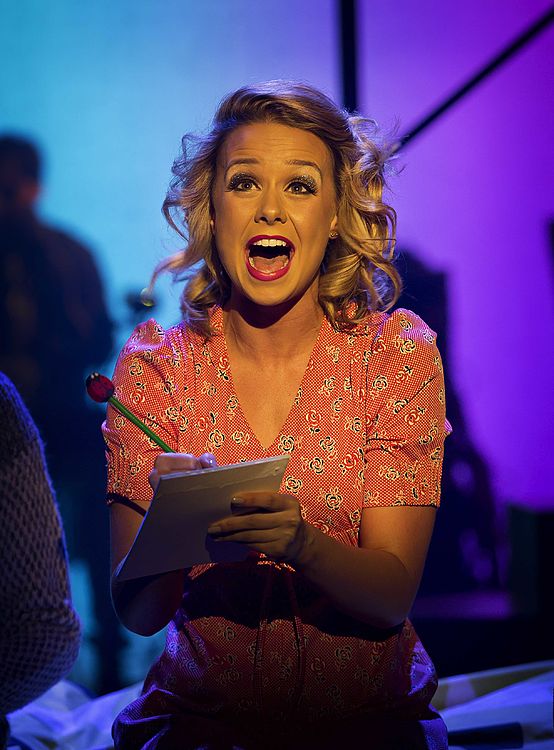The Cheviot, the Stag and the Black, Black Oil – at His Majesty’s Theatre Aberdeen. Duncan Harley reviews.
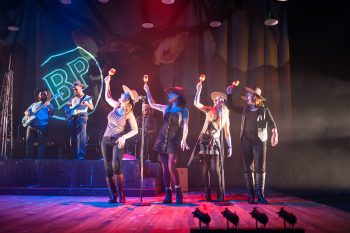
Performed by the Dundee Rep Ensemble as a Highland Ceilidh, Cheviot has been brought bang up to date.
Written by the late John McGrath, The Cheviot, the Stag and the Black, Black Oil tells the story of forced economic change in the Highlands.
First performed by 7:84 Theatre Company in 1973, the Ceilidh play pointedly compares the sheer brutality of the landowning capitalists of the Clearances to the often callous exploitation of Scotland by the predatory capitalists behind the oil boom.
As an unconventional piece of popular theatre combining radical politics with drama, plus music and song, Cheviot predictably attracts mixed reaction.
The Establishment was seemingly not much impressed with the original production, and sheafs of appalled letters were written to The Scotsman. The general reaction ranged from deep hostility from supporters of global capitalism, to a feeling of empowerment amongst nationalists who, despite the extreme Socialist views expressed in the play, sensed that an unlikely ally had emerged to challenge the mores of the day.
Cheviot played to audiences as small as twelve, in Fraserburgh of all places, on that first tour; but persevered and went on to tour the Highlands and beyond, gathering larger audiences along the way. Village halls which had never seen a live play performed were the venues. Folk in far-flung places whose own grandparents had witnessed the Clearances first hand became both spectators and willing participants in this new theatre.
I first saw Cheviot in the 1970s: yes, I am that old, and for free. Strathclyde Regional Council, God rest its cotton socks, had hired a Glasgow performance space so that John McGrath’s take on Scotland’s turbulent economic history could be played out to a wider audience.
What did I make of it then? I can recall the surprise at getting the afternoon off from work, and I can still remember wondering what on earth the city fathers hoped to achieve by exposing both me and my fellow workers to cutting edge agitprop theatre, since we were on the verge of revolution most of the time already. Perhaps they thought that Cheviot might just calm us all down a wee bit.
The show’s pedigree is unquestionably anti-establishment. Estate Factor Patrick Seller burns down a croft house with poor old granny still inside; the loathful Duke of Sutherland evicts 15k of his tenants to make way for 200,000 sheep; Highland regiments are sacrificed on a colonial whim, and Highland culture comes under sustained attack from the capitalised aristocracy.
The Astors, David Cameron’s family and a toupee-topped golf course magnate with Lewis connections all take it firmly on the chin; all in the best possible taste of course, and with unforgettable sing-along ditties, including:
“we’ve cleared the straths, we’ve cleared the paths, we’ve cleared the bens, we’ve cleared the glens, we’ll show them we’re the ruling class.”
Performed by the Dundee Rep Ensemble as a Highland Ceilidh, Cheviot has been brought bang up to date. The timeline of the original production concluded with the discovery of North Sea oil, but now concludes with the oil exploration downturn which Mark Carney has described as:
“a challenging environment which, given global prices, may persist for some time.”
The cast of ten play multiple roles and generally this works really well. A coat rail of costumes stands to hand, stage left, and fast changes are the order of the day.
 As Irene Macdougall slips effortlessly into the gown of Sutherland’s infamous estate clearance manager James Loch, Billy Mack is swapping Queen Victoria’s crown for factor Patrick Seller’s top-hat.
As Irene Macdougall slips effortlessly into the gown of Sutherland’s infamous estate clearance manager James Loch, Billy Mack is swapping Queen Victoria’s crown for factor Patrick Seller’s top-hat.
Stephen Bangs moves fluidly between his role as the plaid-clad Sturdy Highlander and that of the totalitarian bible thumping preacher, while Barrie Hunter’s Duke of Sutherland alternates with both an old man and an old woman.
The audience have a big part to play too. This is Ceilidh after all. It’s safe enough to sit in the front row, so long as you don’t stick your hand up too high; but be warned that this production takes audience participation to entirely new levels.
Early on, during a warm-up Canadian Barn Dance, half the audience appeared to be heading off out to Union Terrace as Musical Director Alasdair Macrae called out the steps.
A hilarious sing-along parody of the Alexander Brothers stalwart “For these are my mountains and this is my glen” follows, before the more serious business of lampooning the men who own your glen begins in earnest.
Irvine Welsh‘s Trainspotting Renton, AKA Rent Boy, infamously cried out that:
“It’s SHITE being Scottish! We’re the lowest of the low. We’re ruled by effete assholes. It’s a SHITE state of affairs to be in … and ALL the fresh air in the world won’t make any fucking difference!”
He may have had a point, although McGrath might have disagreed on the finer detail of Renton’s argument. Cheviot, for all the humour – and some of it is very black indeed – takes the stance that the people don’t own the land under their feet; but perhaps they should!
Today’s Cheviot continues to hit the zeitgeist. The message of this play is as relevant today as it was when first performed in the early days of the oil boom. Nothing quite like it had seen before and if you are a newcomer to McGrath’s work, Cheviot will be nothing like you have ever seen before.
Make up your own mind, go see the play. I guarantee that you won’t be disappointed.
As John McGrath once said:
“Cheviot is the music of what is happening.”
The Cheviot, the Stag and the Black, Black Oil performs at HMT Aberdeen until Thursday 6th October
Tickets from Aberdeen Performing Arts Tel: 01224- 641122
Words © Duncan Harley and Images © Aberdeen Performing Arts
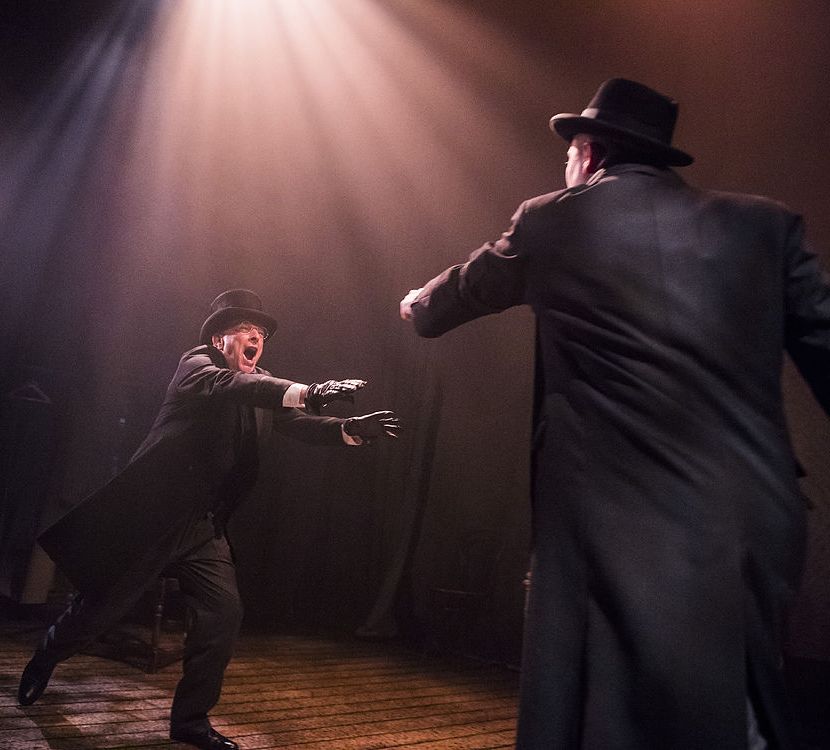 If you enjoy being scared of things which go thump in the night, then this play-within-a-play is a must see.
If you enjoy being scared of things which go thump in the night, then this play-within-a-play is a must see. Pantomime by its very nature is a lively medium. The plot typically presents as a well known folk tale and a typical production will involve the use of loud special effects and fast-paced slapstick comedy.
Pantomime by its very nature is a lively medium. The plot typically presents as a well known folk tale and a typical production will involve the use of loud special effects and fast-paced slapstick comedy. The concept of an autism-friendly theatre environment is not entirely new, and Aberdeen Performing Arts is no stranger to the concept. Performances catering specifically for the requirements of theatre goers with disabilities, additional support needs and on the autistic spectrum are thankfully on the increase.
The concept of an autism-friendly theatre environment is not entirely new, and Aberdeen Performing Arts is no stranger to the concept. Performances catering specifically for the requirements of theatre goers with disabilities, additional support needs and on the autistic spectrum are thankfully on the increase. Scotland’s very own Elaine C. Smith took to the Aberdeen pantomime stage for the eighth year in succession this month. Appearing as lead in Dick McWhittington alongside seasoned fellow pantomime favourites Jordan Young and Alan McHugh, Elaine’s portrayal of Fairy Fit Like proved yet again that the hoary old one liner ‘Thespian: Where’s my career? Audience: It’s behind you!’ doesn’t really cut the mustard nowadays.
Scotland’s very own Elaine C. Smith took to the Aberdeen pantomime stage for the eighth year in succession this month. Appearing as lead in Dick McWhittington alongside seasoned fellow pantomime favourites Jordan Young and Alan McHugh, Elaine’s portrayal of Fairy Fit Like proved yet again that the hoary old one liner ‘Thespian: Where’s my career? Audience: It’s behind you!’ doesn’t really cut the mustard nowadays.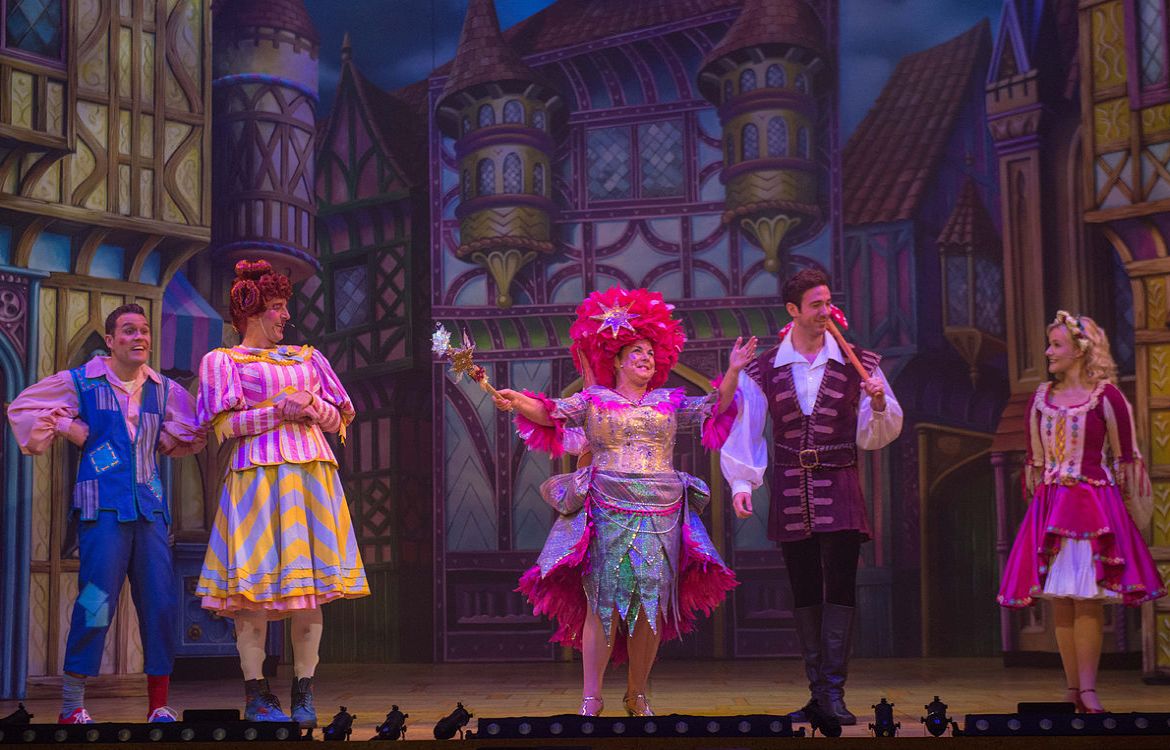 The sets are sumptuous, the puns are outrageous and at points, and for all the right reasons, there wasn’t a dry eye in the audience.
The sets are sumptuous, the puns are outrageous and at points, and for all the right reasons, there wasn’t a dry eye in the audience.


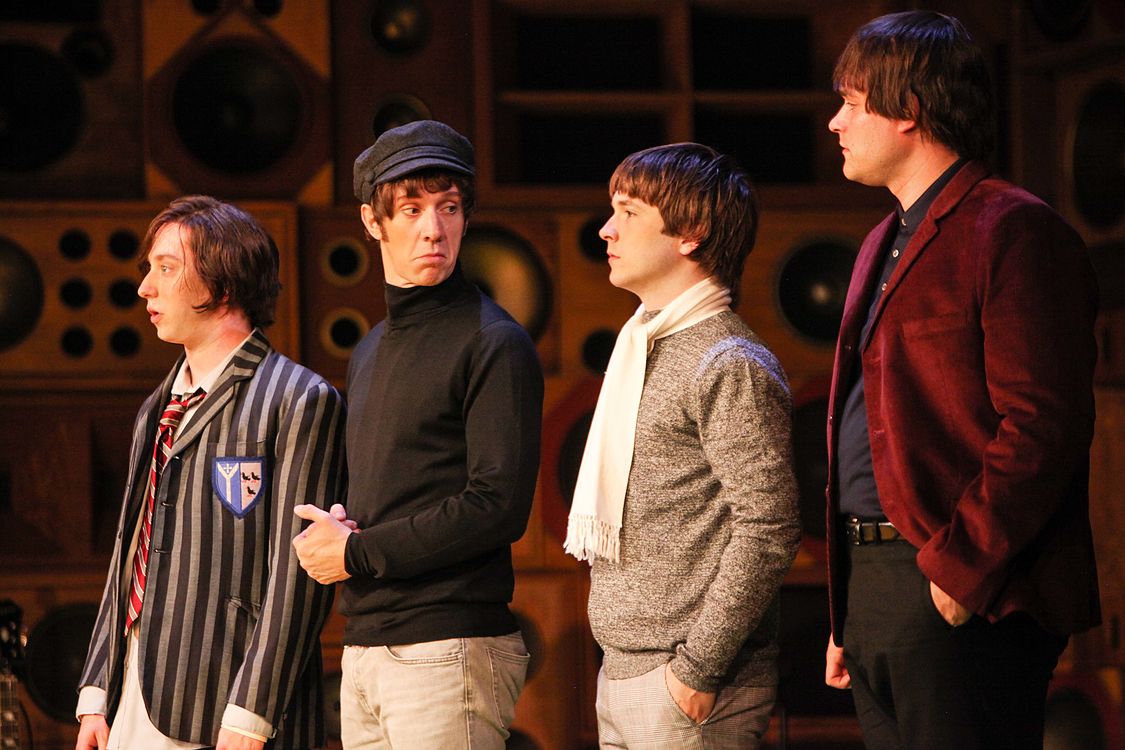
 Long ago, childhood Sundays were punctuated by an obligatory visit to Sunday School, and then on to Grandma and Grandpa’s for the Sunday roast. The day of course began with a breakfast of tea and groats, followed by a wee read of the Sunday Post pull-out Fun Section which, then as now, sported a full page sitcom monochrome comic strip featuring Maw, Paw and the entire Broon family.
Long ago, childhood Sundays were punctuated by an obligatory visit to Sunday School, and then on to Grandma and Grandpa’s for the Sunday roast. The day of course began with a breakfast of tea and groats, followed by a wee read of the Sunday Post pull-out Fun Section which, then as now, sported a full page sitcom monochrome comic strip featuring Maw, Paw and the entire Broon family. A good measure of the audience laughed in all the right places, and that surely must indicate success.
A good measure of the audience laughed in all the right places, and that surely must indicate success.

 Take a few soap stars, add some distinctly slinky costumes and pour in a few measures of Prohibition-era corruption and what have you got? Chicago the Musical, of course!
Take a few soap stars, add some distinctly slinky costumes and pour in a few measures of Prohibition-era corruption and what have you got? Chicago the Musical, of course! Emmerdale’s Hayley Tamaddon fairly threw herself into the 2010 TV production of Dancing on Ice, and she drew gasps from the audience this week as she strutted her stuff on the Aberdeen stage.
Emmerdale’s Hayley Tamaddon fairly threw herself into the 2010 TV production of Dancing on Ice, and she drew gasps from the audience this week as she strutted her stuff on the Aberdeen stage. The timing couldn’t really be better. At a time when Labour is in disarray and the pay differential between males and females performing the same job remains at a whopping 18%, the Lyric Musical Society production of Made in Dagenham the Musical illustrates graphically that despite decades of industrial strife and equal pay legislation there is nothing fundamentally different in the labour market.
The timing couldn’t really be better. At a time when Labour is in disarray and the pay differential between males and females performing the same job remains at a whopping 18%, the Lyric Musical Society production of Made in Dagenham the Musical illustrates graphically that despite decades of industrial strife and equal pay legislation there is nothing fundamentally different in the labour market. Based on the 2010 film of the same name, the Lyric Musical Society production of Made in Dagenham the Musical presents the story of the ensuing three week strike in an engagingly gritty and generally humorous style.
Based on the 2010 film of the same name, the Lyric Musical Society production of Made in Dagenham the Musical presents the story of the ensuing three week strike in an engagingly gritty and generally humorous style.

